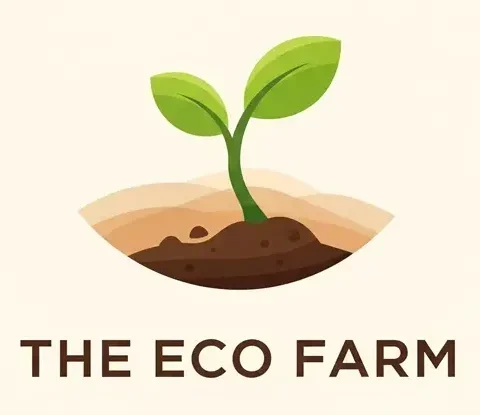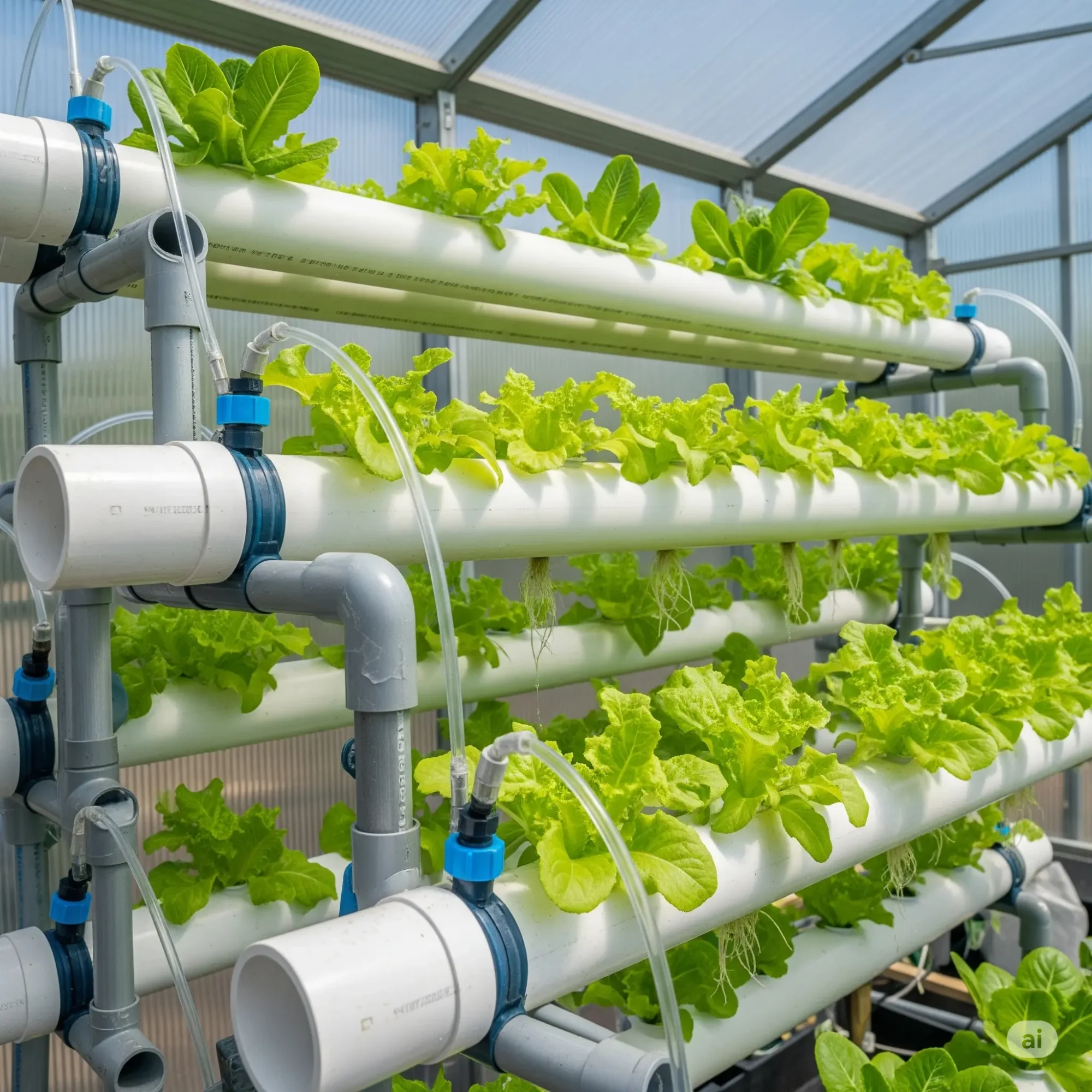Make it Possible Using Recycled Materials
Have you ever looked at that pile of plastic bottles destined for the recycling bin and wondered if they could serve a greater purpose? What if I told you that those everyday items sitting in your kitchen could become the foundation of a thriving hydroponic garden? Welcome to the world of sustainable hydroponics, where environmental consciousness meets innovative growing techniques.
In today’s world, where sustainability isn’t just a buzzword but a necessity, creating hydroponic systems from recycled materials offers an incredible opportunity to reduce waste while cultivating fresh produce. This comprehensive guide will walk you through everything you need to know about building eco-friendly hydroponic systems using materials you probably already have at home.
Why Choose Recycled Materials for Your Hydroponic System?
Before diving into the how-to, let’s explore why recycling materials for hydroponic setups makes perfect sense. Traditional hydroponic systems can be expensive, often requiring specialized equipment that puts them out of reach for many gardening enthusiasts. By using recycled materials, you’re not only saving money but also contributing to a more sustainable future.
The environmental benefits are substantial. Recycling materials can reduce energy costs by up to 95%, and when applied to hydroponics, this translates to significant savings on both setup costs and ongoing maintenance. Plus, you’re giving a second life to materials that would otherwise contribute to landfill waste.
Essential Recycled Materials for Hydroponic Systems
Let’s start with the building blocks of your sustainable hydroponic garden. The beauty of this approach lies in its accessibility – most materials can be found right in your home or easily obtained from your community.
| Material | Primary Use | Preparation Required | Difficulty Level |
|---|---|---|---|
| Plastic Bottles (2L) | Reservoir & Growing Chamber | Clean, cut, drill holes | Beginner |
| Plastic Tubs/Containers | Main reservoir | Clean, seal holes | Beginner |
| PVC Pipes | NFT system framework | Cut, drill, clean | Intermediate |
| Mason Jars | Individual plant containers | Modify lids | Beginner |
| Styrofoam Containers | Floating raft systems | Cut holes, sanitize | Beginner |
Plastic Bottles: The Foundation of Sustainable Hydroponics
Plastic bottles are perhaps the most versatile recycled material for hydroponic systems. A well-designed plastic bottle hydroponic system can support everything from herbs to small vegetables. The key is understanding how to modify these bottles effectively.
When preparing plastic bottles for hydroponic use, start by removing all labels and thoroughly cleaning them with warm soapy water. The next step involves cutting the bottle strategically – typically, you’ll cut it in half, with the bottom serving as a reservoir and the inverted top acting as a growing chamber. This simple modification creates a self-watering system that’s perfect for beginners.
Large Containers and Tubs
For those looking to scale up their hydroponic operations, recycled plastic tubs make excellent reservoirs. These containers can support multiple plants and are perfect for creating deep water culture (DWC) systems.
The preparation process for tubs involves creating holes in the lid for net pots, ensuring proper spacing for plant growth. You’ll also need to install an air pump system to oxygenate the water – this is crucial for root health in DWC systems.
Step-by-Step Guide: Building Your First Recycled Hydroponic System
Now that we’ve covered the materials, let’s walk through creating your first system. We’ll start with a simple plastic bottle hydroponic system – perfect for herbs or leafy greens.
Materials Needed:
- One 2-liter plastic bottle
- Growing medium (clay pellets, perlite, or coconut coir)
- Hydroponic nutrient solution
- Seeds or seedlings
- String or cloth wick
- Scissors or craft knife
- Drill with small bits
Assembly Process:
- Prepare the bottle: Remove the label and clean thoroughly. Cut the bottle approximately one-third from the top.
- Create the wick system: Thread a string or cloth wick through the bottle neck, ensuring it extends into the bottom portion.
- Invert and assemble: Turn the top portion upside down and place it into the bottom portion, creating a funnel effect.
- Add growing medium: Fill the inverted top with your chosen growing medium.
- Plant your seeds: Place seeds or seedlings in the growing medium.
- Fill with nutrient solution: Add hydroponic nutrient solution to the bottom reservoir.
This simple system works on the principle of capillary action, where the wick draws nutrients up to the plant roots. It’s incredibly effective for herbs like basil, lettuce, and other leafy greens.
Advanced Recycled Hydroponic Systems
Once you’ve mastered the basic bottle system, you might want to explore more sophisticated setups. Creative upcycling ideas can transform everyday items into impressive hydroponic gardens.
NFT System Using Recycled PVC
Nutrient Film Technique (NFT) systems are excellent for maximizing space and can be built entirely from recycled PVC pipes. This system allows a thin film of nutrient solution to flow continuously over the roots, providing constant nutrition while maintaining excellent oxygenation.
To build an NFT system, you’ll need several pieces of PVC pipe, a water pump, and a reservoir. The pipes are positioned at a slight angle to allow gravity to move the nutrient solution. Plants are placed in holes cut along the top of the pipes, with their roots extending into the flowing nutrient film.
Floating Raft System
This system uses recycled styrofoam containers to create floating rafts that support plants while their roots dangle in the nutrient solution below. It’s particularly effective for leafy greens and herbs.
Cost Analysis: Traditional vs. Recycled Hydroponic Systems
Let’s examine the financial benefits of choosing recycled materials for your hydroponic setup. The cost savings are often dramatic, making hydroponics accessible to budget-conscious gardeners.
| Component | Traditional System Cost | Recycled System Cost | Savings |
|---|---|---|---|
| Growing containers | $25-50 | $0-5 | $20-45 |
| Reservoir system | $30-60 | $0-10 | $20-50 |
| Support structures | $20-40 | $0-8 | $12-32 |
| Piping/tubing | $15-25 | $0-5 | $10-20 |
| Total Setup | $90-175 | $10-28 | $62-147 |
As you can see, the savings are substantial. Most recycled hydroponic systems can be built for less than $30, compared to $90-175 for traditional setups. This makes hydroponics accessible to students, urban gardeners, and anyone looking to start growing without a significant upfront investment.
Environmental Impact and Sustainability Benefits
The environmental benefits of recycled hydroponic systems extend far beyond cost savings. By recycling and upcycling materials in hydroponic systems, you’re contributing to a circular economy that reduces waste and conserves resources.
Consider the lifecycle of a plastic bottle. Instead of ending up in a landfill where it might take hundreds of years to decompose, it becomes a productive growing system that can produce food for months or even years. This transformation represents a perfect example of how individual actions can contribute to environmental sustainability.
Water Conservation
Hydroponic systems, especially those built from recycled materials, are incredibly water-efficient. Recycling hydroponic water has numerous benefits, including significant cost savings and environmental protection. These systems use up to 90% less water than traditional soil-based gardening, making them ideal for areas with water restrictions or drought conditions.
Reduced Carbon Footprint
By choosing recycled materials, you’re reducing the demand for new plastic production, which is energy-intensive and contributes to greenhouse gas emissions. Additionally, growing your own food reduces transportation emissions associated with store-bought produce.
Troubleshooting Common Issues
Even with careful planning, you might encounter some challenges with your recycled hydroponic system. Here are solutions to common problems:
Algae Growth
Algae can be a persistent problem in transparent containers. The solution is simple: wrap your reservoir in aluminum foil or dark plastic to block light. Algae need light to grow, so eliminating their light source effectively controls their growth.
pH Imbalances
Recycled containers might affect your nutrient solution’s pH. Regular testing and adjustment with pH up or down solutions will keep your plants healthy. Most plants prefer a pH between 5.5 and 6.5 in hydroponic systems.
Root Rot
Poor oxygenation can lead to root rot. Ensure adequate air circulation and consider adding an air pump to your system. Healthy roots are white and firm, while rotting roots appear brown and mushy.
Maintenance and Long-term Care
Maintaining your recycled hydroponic system is straightforward but essential for long-term success. Regular cleaning and monitoring will keep your system productive for years.
Clean your system thoroughly between growing cycles, replacing nutrient solutions regularly, and inspecting recycled components for wear. Most recycled materials will last multiple growing seasons with proper care.
Creative Upcycling Ideas
The possibilities for recycled hydroponic systems are limited only by your imagination. Creative approaches to building hydroponic gardens can transform everyday items into productive growing systems.
Consider using old wire frames as vertical growing structures, transforming discarded ladders into tiered growing systems, or repurposing wooden pallets as support frameworks. These materials add character to your garden while making it more sustainable.
Scaling Up Your Operations
Once you’ve mastered small-scale systems, you might want to expand your hydroponic garden. Scaling up with recycled materials requires planning but remains cost-effective and environmentally friendly.
Consider creating multiple smaller systems rather than one large one. This approach allows for better crop rotation, easier maintenance, and reduced risk if one system fails. You can also experiment with different designs and growing techniques across multiple systems.
Ready to Start Your Sustainable Hydroponic Journey?
Building hydroponic systems from recycled materials combines environmental responsibility with practical gardening skills. Start small, learn from experience, and gradually expand your setup as you gain confidence.
Remember, every plastic bottle you transform into a growing system is one less item in a landfill and one step toward a more sustainable future. Your garden becomes a testament to the power of creative recycling and innovative thinking.
Conclusion
Creating hydroponic systems from recycled materials represents the perfect intersection of environmental consciousness and practical gardening. You’ve learned how simple household items can be transformed into productive growing systems that rival expensive commercial setups.
The journey from waste to harvest demonstrates that sustainability doesn’t require sacrifice – it simply requires creativity and commitment. Your recycled hydroponic system will not only provide fresh, healthy produce but also serve as a daily reminder of what’s possible when we reimagine waste as a resource.
Start with a simple plastic bottle system, experience the satisfaction of growing your own food, and let your success inspire others to join the sustainable growing movement. The future of food production lies in innovative, environmentally conscious approaches exactly like the ones you’re now equipped to create.
What will you grow in your recycled hydroponic system? The possibilities are as endless as your imagination, and the impact extends far beyond your garden to create a more sustainable world for future generations.

